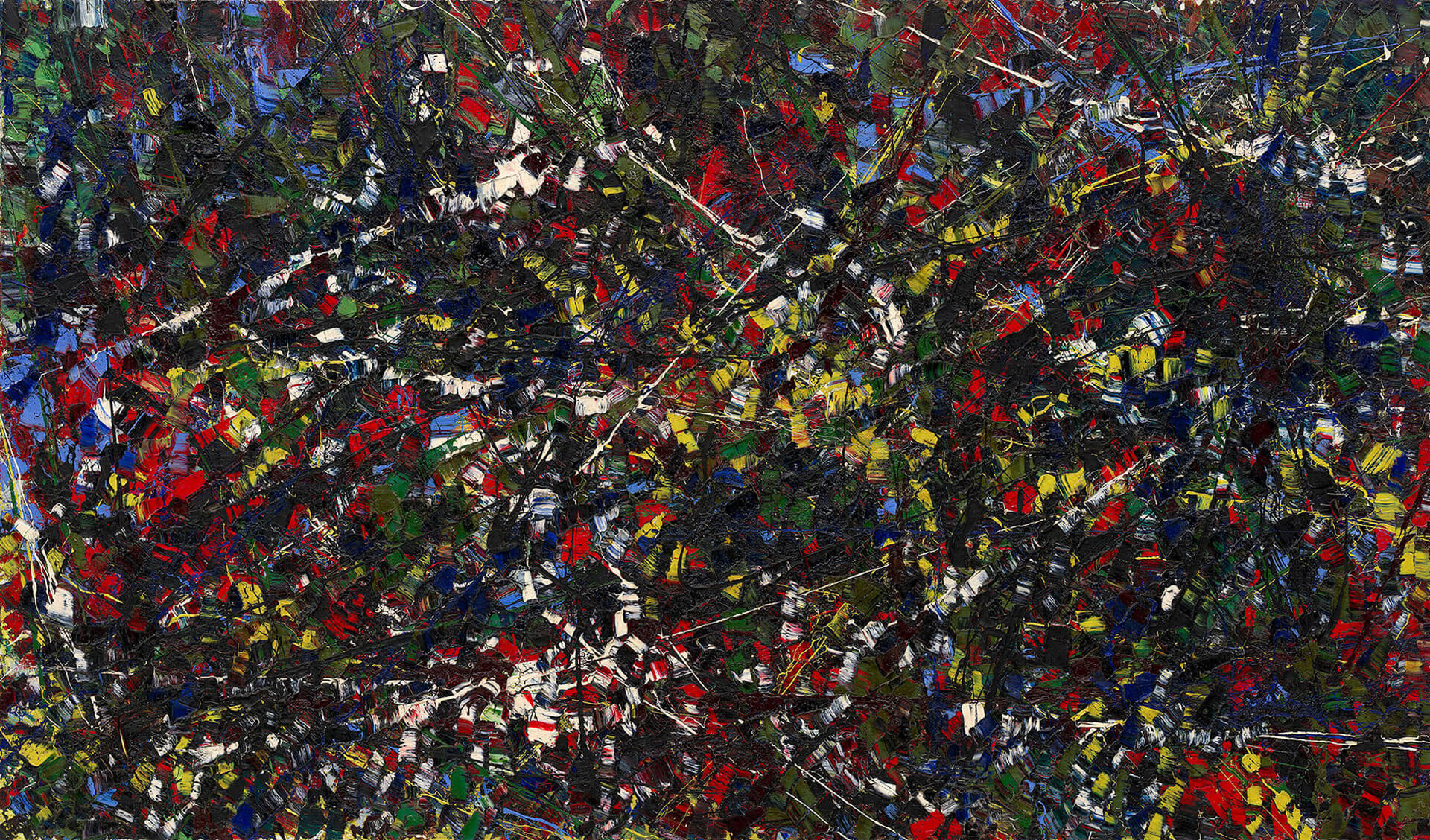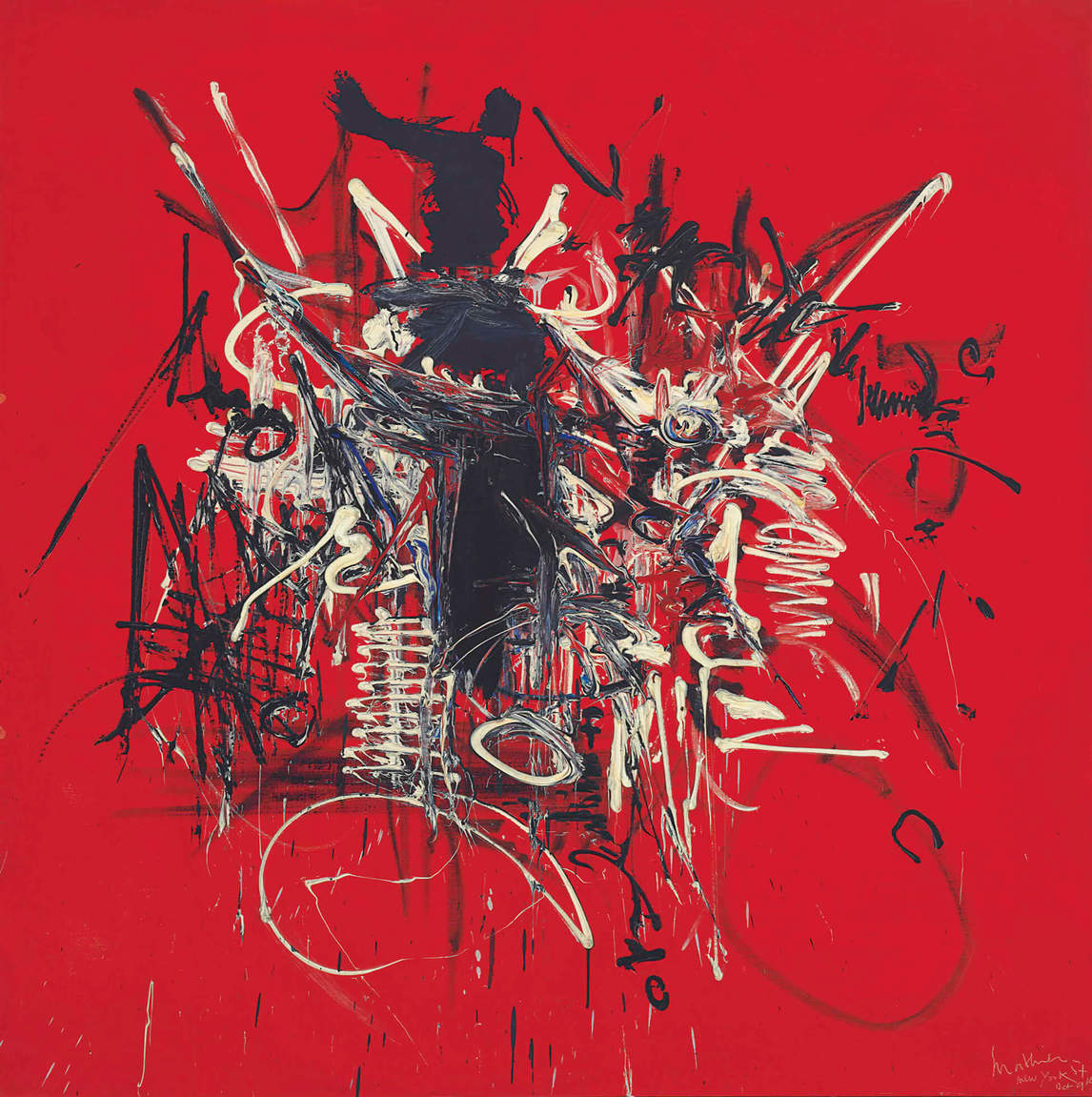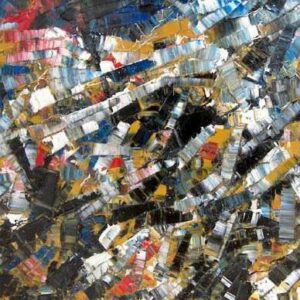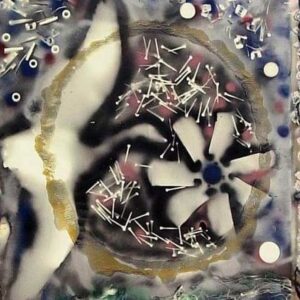Blue Night, 1953

Jean Paul Riopelle, Blue Night (La nuit bleue), 1953
Oil on canvas, 114 x 194.9 cm
© Jean Paul Riopelle Estate / SOCAN (2019)
Solomon R. Guggenheim Museum, New York
Blue Night, by Jean Paul Riopelle, is an ambitious composition. A multilayered painted surface of criss-crossed colours in a complex pattern, at once restrained and explosive, it looks to be regulated by the rhythm of the palette knife strokes that so distinctly define it. The image itself appears fractured, as if the window to the world that the painting was intended to be has been smashed by the artist, rupturing the night sky into a mutlicoloured abstraction.

This painting was first shown in the landmark exhibition Younger European Painters: A Selection, presented at the Solomon R. Guggenheim Museum from December 2, 1953, to February 21, 1954. The iconic Frank Lloyd Wright building had yet to be built and exhibitions were held at 24 East Fifty-Fourth Street in Manhattan. The show was organized by the museum’s director, James Johnson Sweeney, who was motivated by a desire to fabricate a confrontation between avant-garde painters from both sides of the Atlantic. At the same time, he wished to celebrate the École de Paris artists after the warm welcome the Americans had received in Paris in 1951 with the exhibition Véhémences confrontrées (Confronted Vehemences). In media reports about the exhibition Riopelle was described as a Parisian painter of Canadian origin.
While American critics reacted positively to the Guggenheim show, the “younger Europeans” were inevitably compared to the more established American Abstract Expressionists. Riopelle, in particular, was associated with Jackson Pollock, no doubt because of the white lines that criss-cross his paintings, such as those in Blue Night. Robert Goldwater, an American art historian and husband of the artist Louise Bourgeois (1911–2010), was thrilled by the exhibition and declared Sweeney’s choice highly representative of the new artistic development. “Abstraction dominates. . .,” he wrote, “as it should, but is presented in an astonishing variety of styles.” He was particularly interested in the work of Georges Mathieu (1921–2012), linking him and Riopelle, who shared what he called “expressionist tendencies.”
While the exhibition manufactured a rivalry between the Paris and New York schools, which was taken up during the 1950s under the influence of the formalist art critic Clement Greenberg (1909–1994), it was nevertheless notable for the great camaraderie that grew among the painters from both sides of the ocean. The experience was a blessing for Riopelle: on December 5, 1953, the Montreal daily La Presse announced that Blue Night had been acquired by the Guggenheim for its permanent collection.

 About the Author
About the Author
 More Online Art Books
More Online Art Books
 Acknowledgements
Acknowledgements